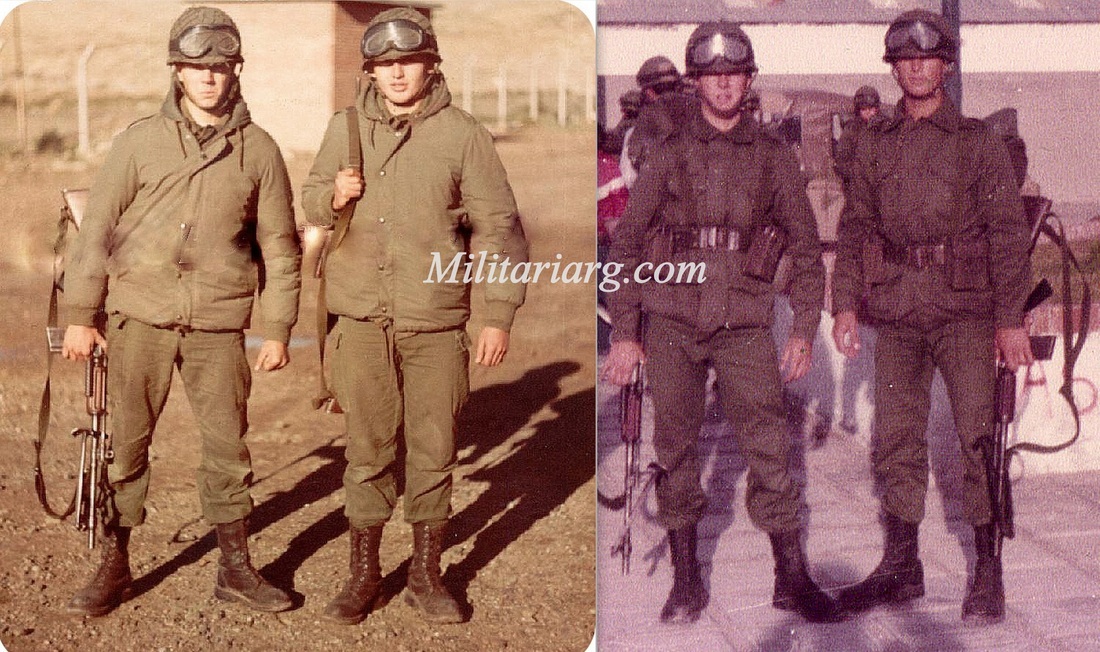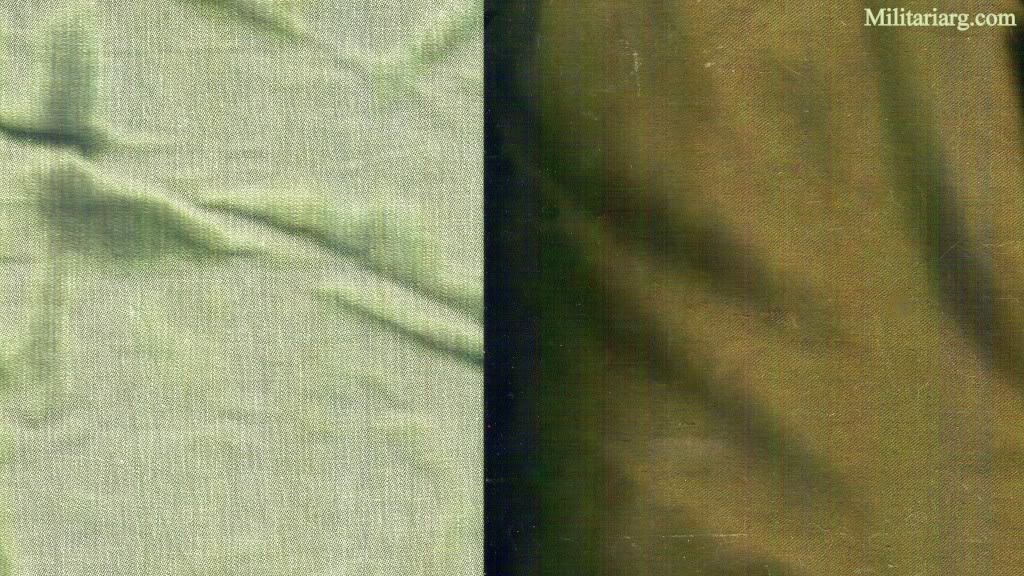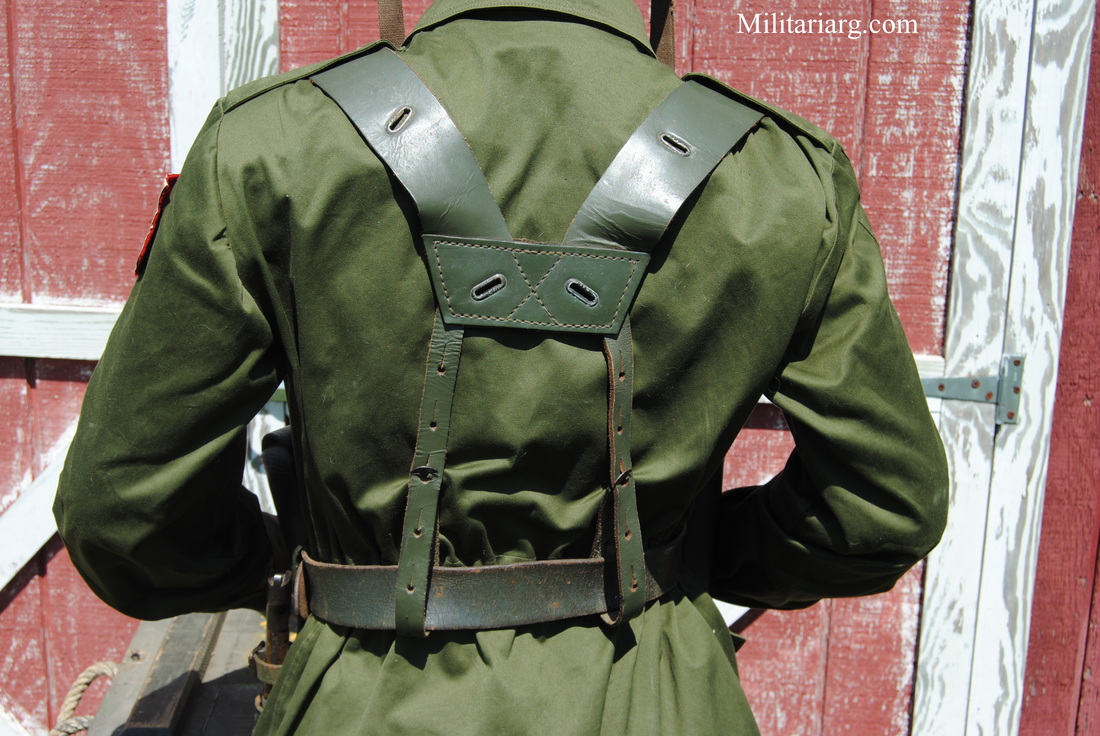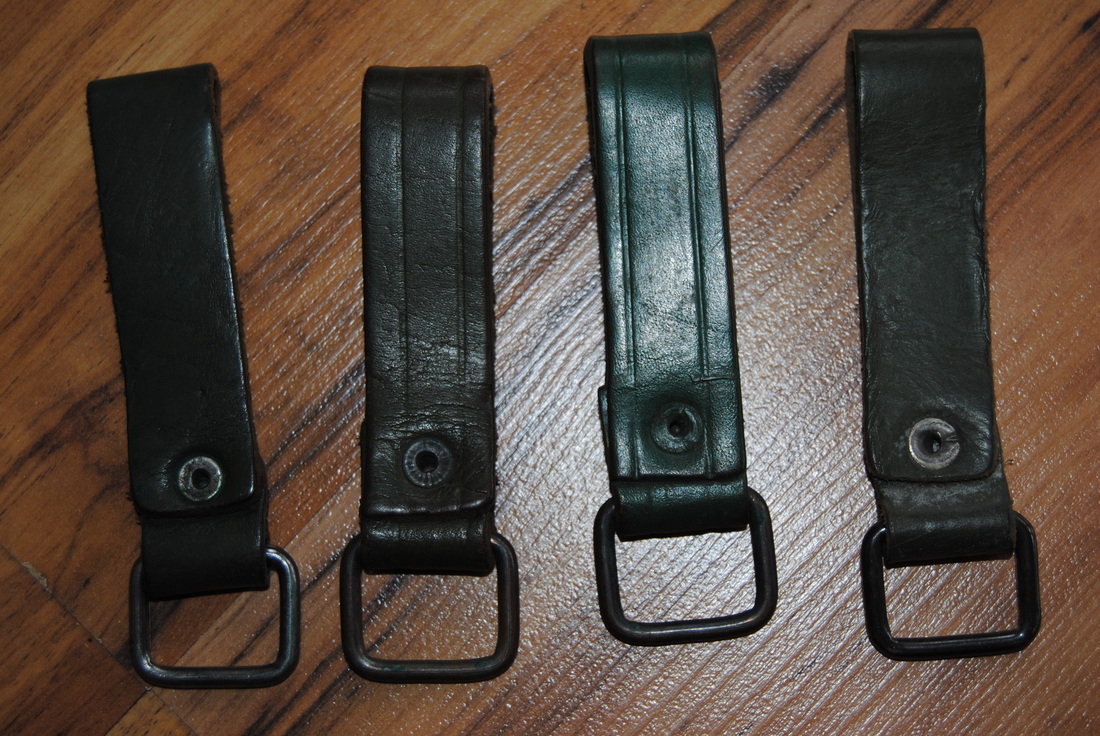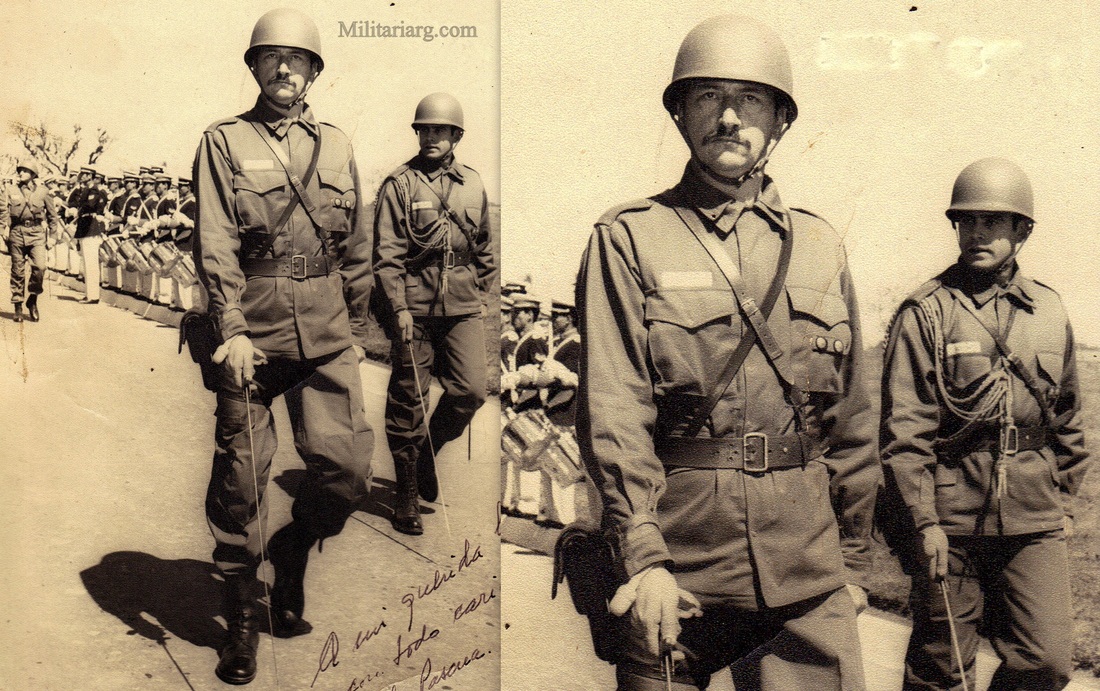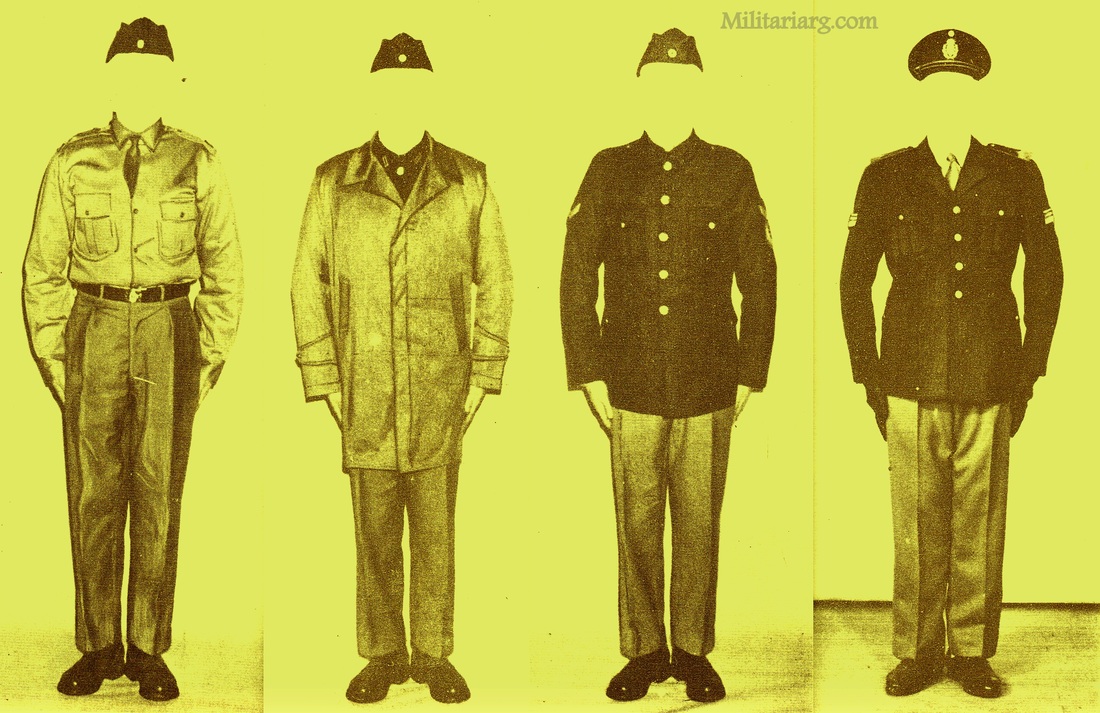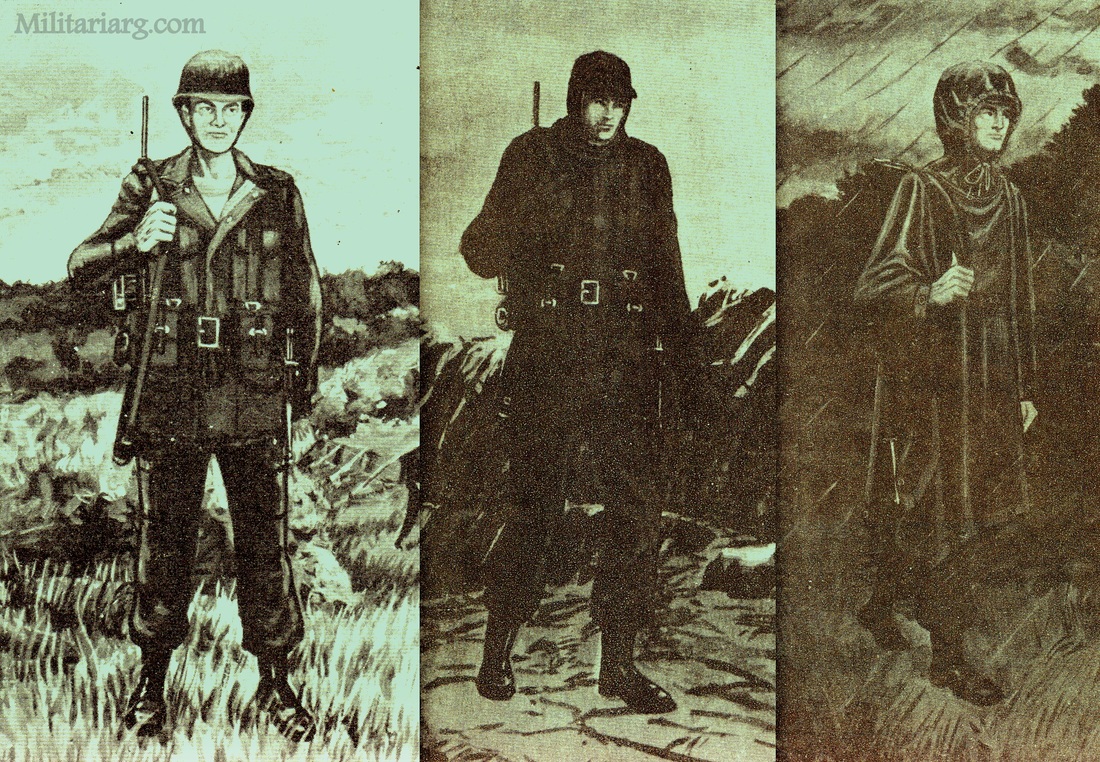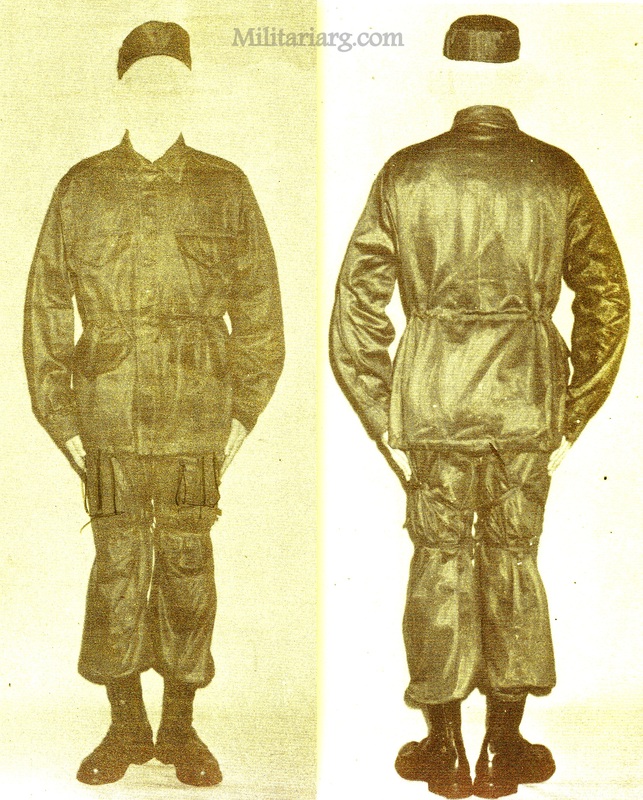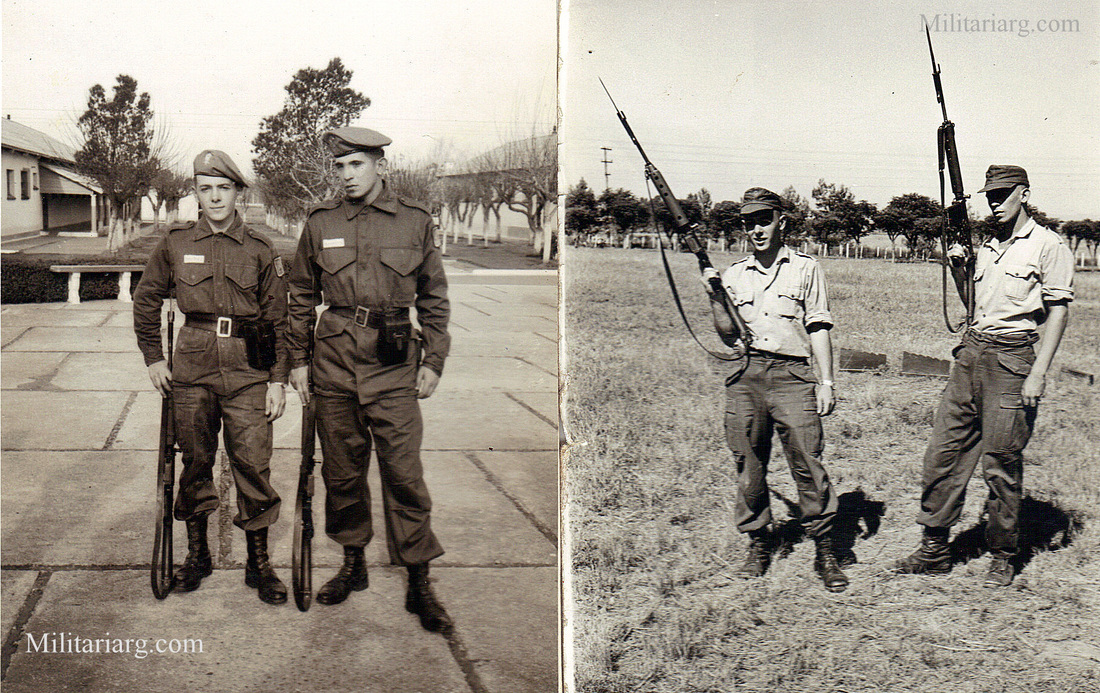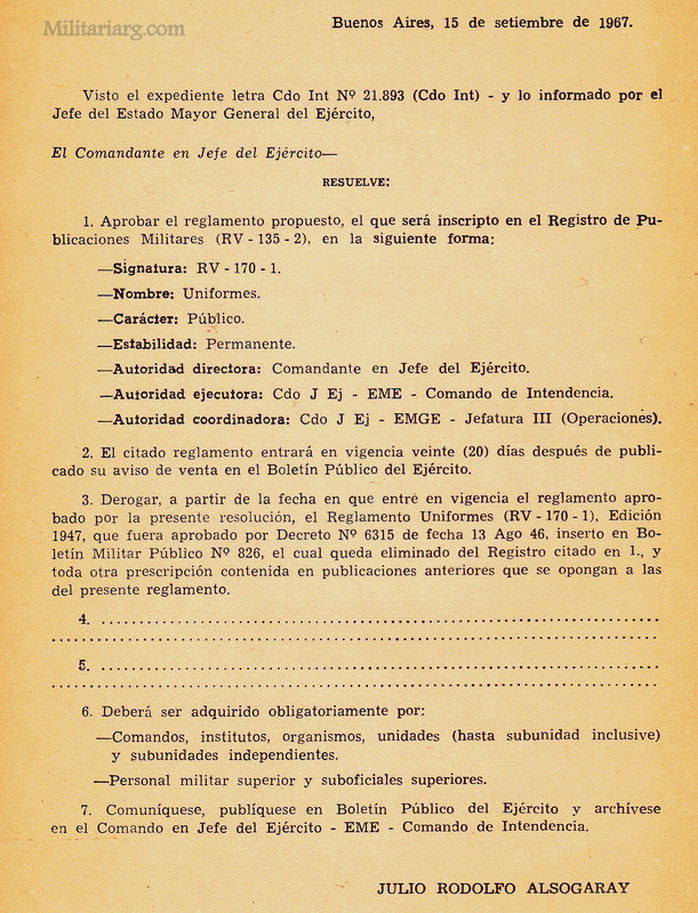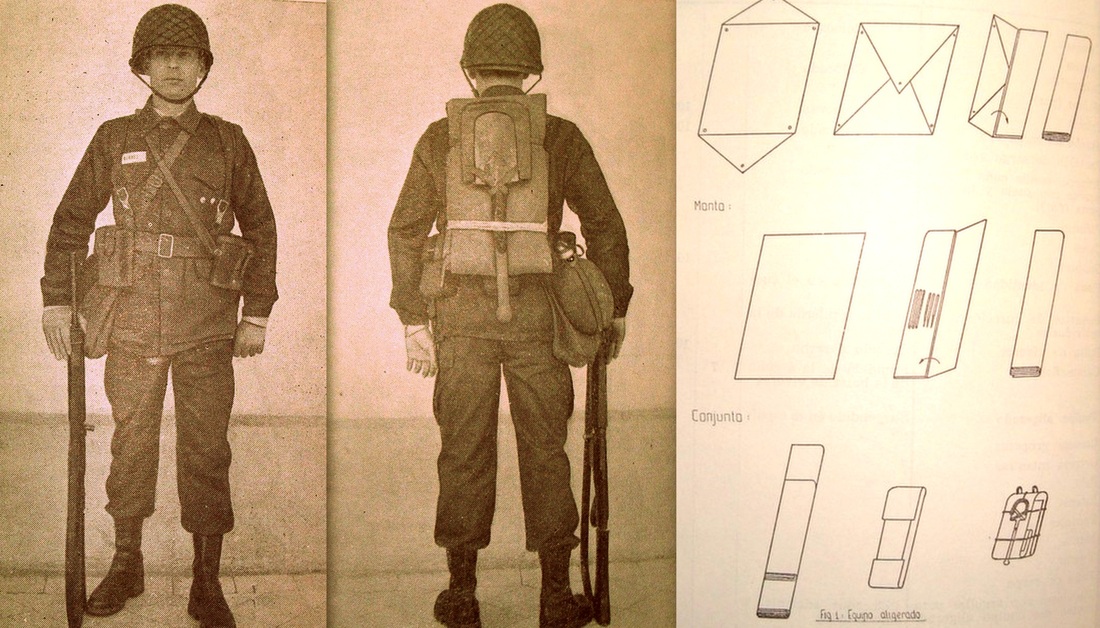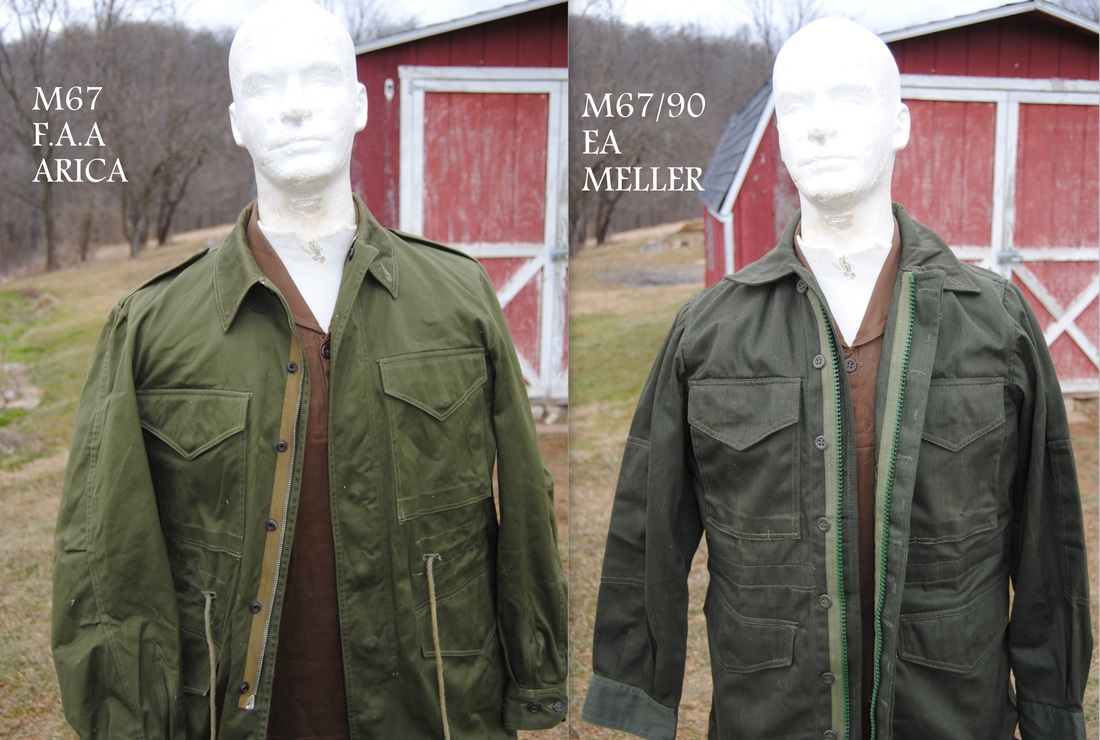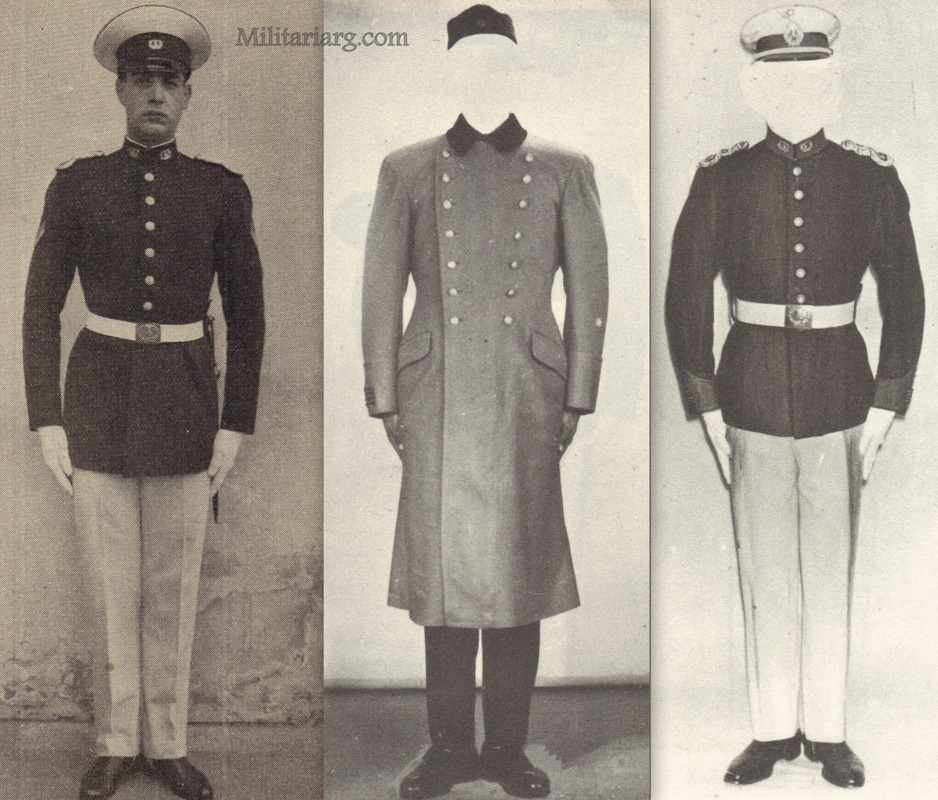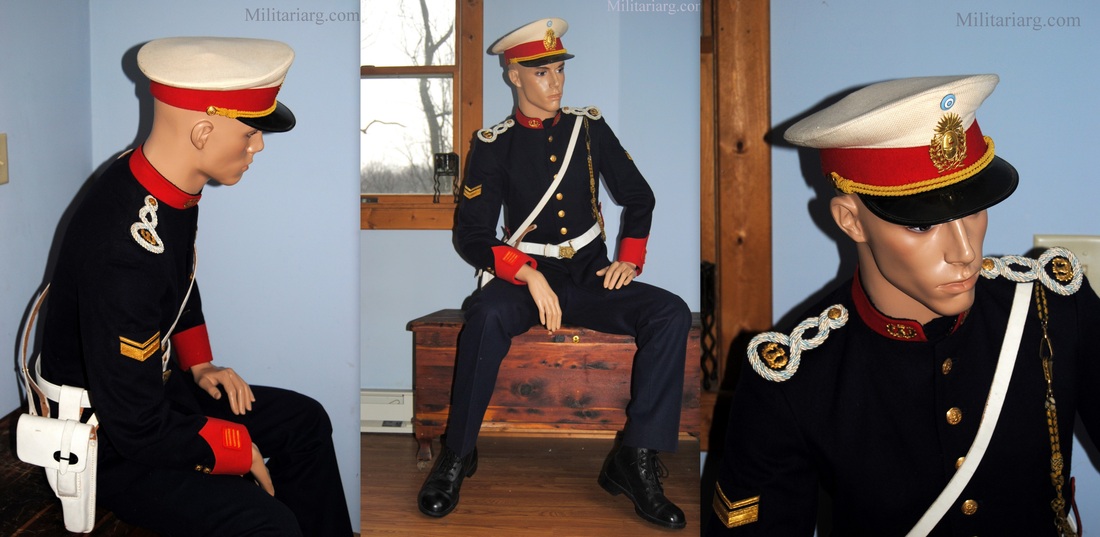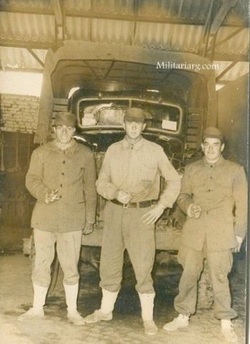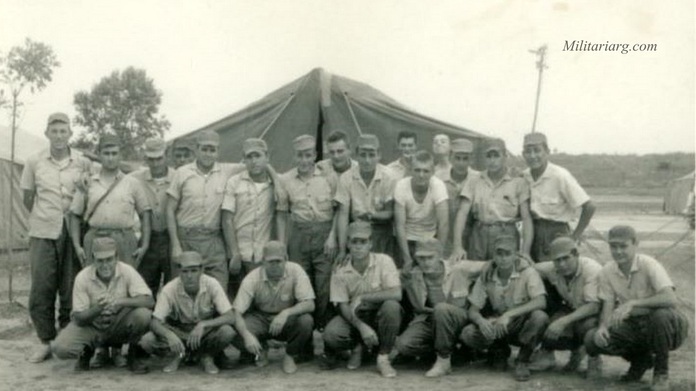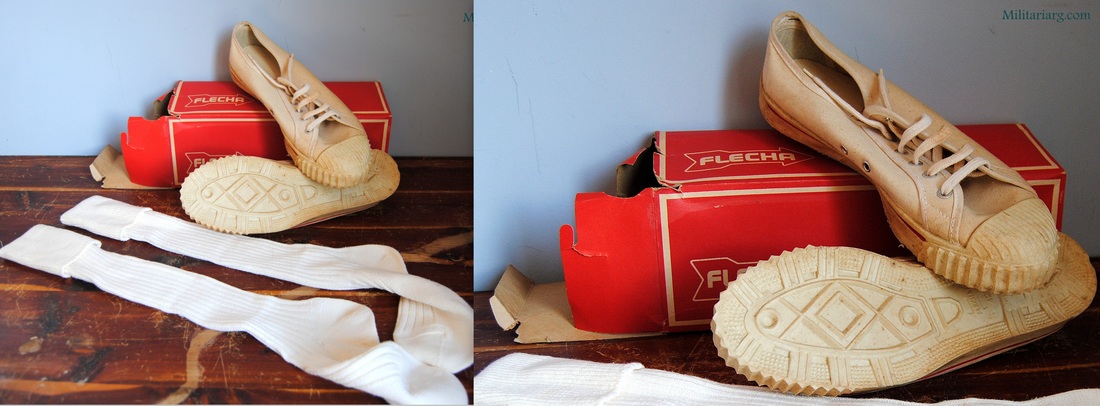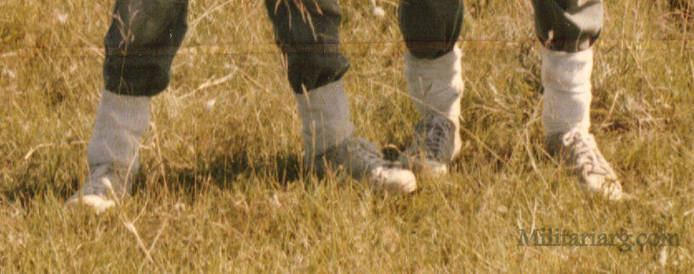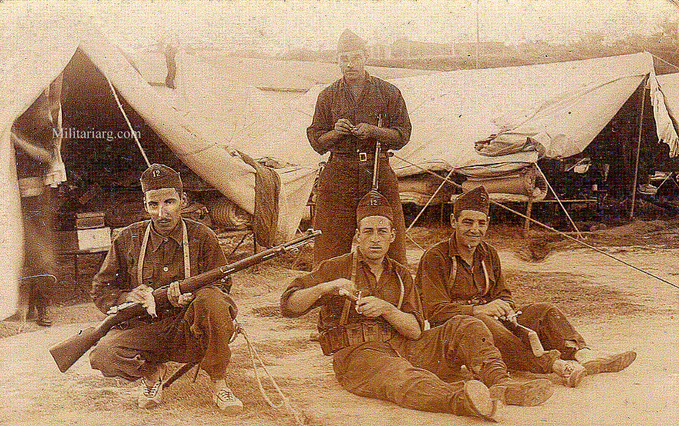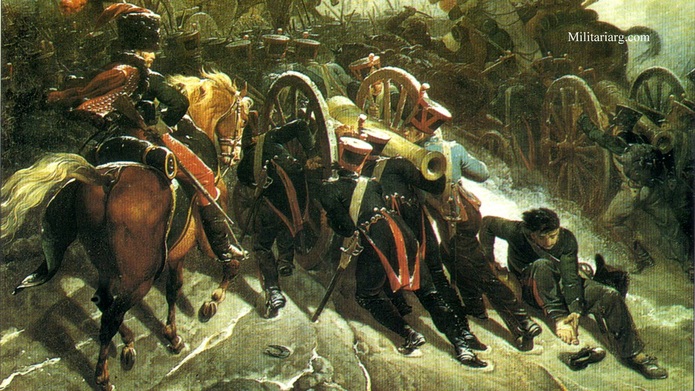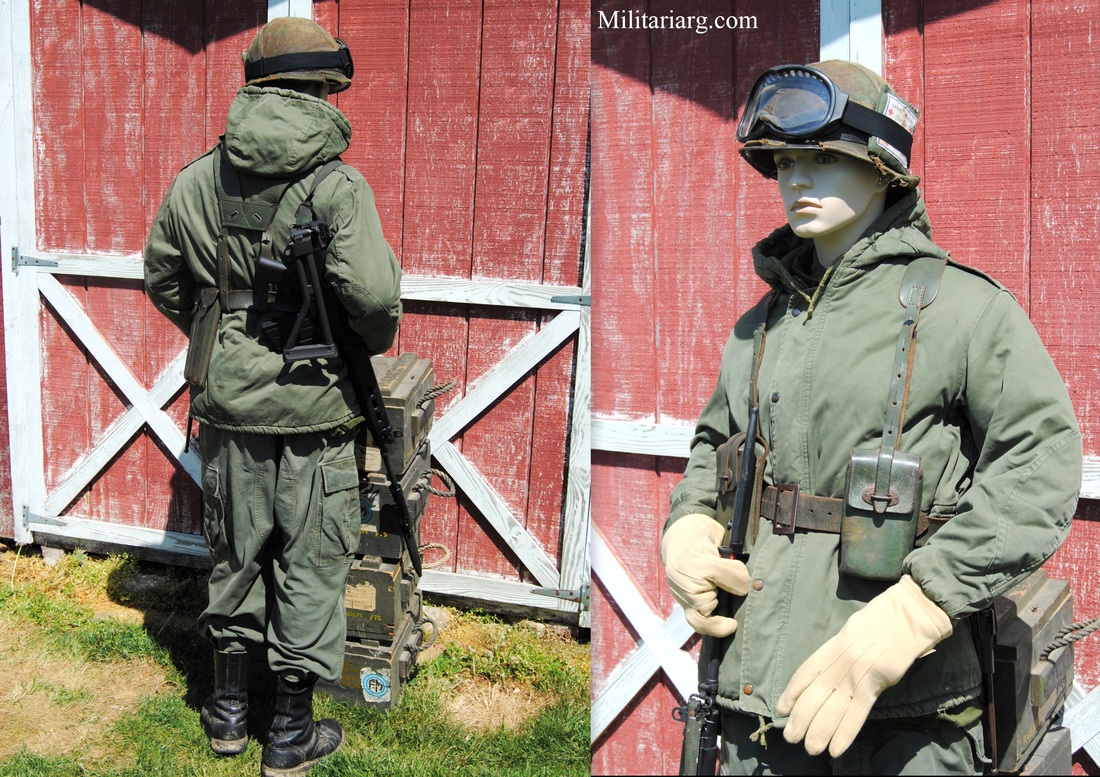The Olive Green Uniform:
The olive green combat uniform of our army began to be used from the Presidency of Alvear in the purely British style. The olive khaki replaces the model 1910 around these dates. It continues with the regulations of 1931, 1946
and 1967.
More recently the olive green uniform was used in the Falklands War, from the regulations of 1967, or Model 67. This uniform followed in service into the 90s with some modifications.
Throughout the 20th century, the country decreed changes in the uniforms, better known as RRM44 regulations, which were
subject to innumerable modifications in the process. I sense that the RV-170 may have been a revision or annex, memos to incorporate or discard the incorporation of new elements to the uniform.
The green hues are independent of their use in past centuries, such as during the Napoleonic Wars with the French
Hussars, British artillery and green dragons in "Forest", but not as a chameleon factor but as a color that distinguished them from other units in the field of operations. Our country copied these trends, since the British invasion and the
Infernal Squadron, Corrientes Hunters, The Lancers in the war against the Empire of Brazil, the sappers during Independence War, The Artillery of the breakaway state of Buenos Aires (1852 - 61). During the creation of the modern army, when it ceased being a militia, the green color is consolidated into the infantry as an accent on the blue uniform in the French cut.
The green combat uniform as a chameleon factor began to be used in the Italian Regio Esercito by the early 20th century, where they took as reference the dominant vegetation in the area and made a general's uniform not so different from a soldier's. The color was a green-gray "Grigioverde" also before the British in their colonies used the khaki uniform, or the color of the earth. The word "khaki" comes from the Persian-Hindu language in British-dominated areas. The Italian Regio
Esercito standardized and formalized the green mimetic combat uniform to all weapons. From the First War on the ground, green and its tones is consolidated. Possibly the English army may have started the olive of the 20th
century.
In our country from Ricchieri (Architect of Modern Army) in 1900, differences begin to approach in the color of uniforms of the officers with the troops in battle dress. In 1910 the first color campaign uniform under modern standards in our army was the khaki, the color that evolved over time into olive green and earthy brown for the mountain troops.
and 1967.
More recently the olive green uniform was used in the Falklands War, from the regulations of 1967, or Model 67. This uniform followed in service into the 90s with some modifications.
Throughout the 20th century, the country decreed changes in the uniforms, better known as RRM44 regulations, which were
subject to innumerable modifications in the process. I sense that the RV-170 may have been a revision or annex, memos to incorporate or discard the incorporation of new elements to the uniform.
The green hues are independent of their use in past centuries, such as during the Napoleonic Wars with the French
Hussars, British artillery and green dragons in "Forest", but not as a chameleon factor but as a color that distinguished them from other units in the field of operations. Our country copied these trends, since the British invasion and the
Infernal Squadron, Corrientes Hunters, The Lancers in the war against the Empire of Brazil, the sappers during Independence War, The Artillery of the breakaway state of Buenos Aires (1852 - 61). During the creation of the modern army, when it ceased being a militia, the green color is consolidated into the infantry as an accent on the blue uniform in the French cut.
The green combat uniform as a chameleon factor began to be used in the Italian Regio Esercito by the early 20th century, where they took as reference the dominant vegetation in the area and made a general's uniform not so different from a soldier's. The color was a green-gray "Grigioverde" also before the British in their colonies used the khaki uniform, or the color of the earth. The word "khaki" comes from the Persian-Hindu language in British-dominated areas. The Italian Regio
Esercito standardized and formalized the green mimetic combat uniform to all weapons. From the First War on the ground, green and its tones is consolidated. Possibly the English army may have started the olive of the 20th
century.
In our country from Ricchieri (Architect of Modern Army) in 1900, differences begin to approach in the color of uniforms of the officers with the troops in battle dress. In 1910 the first color campaign uniform under modern standards in our army was the khaki, the color that evolved over time into olive green and earthy brown for the mountain troops.
Left the olive-drab uniform BDU American M65. Right Argentine olive green combat jacket M67.
Possibly adapted our army olive green, British style after the Great War (1914-18) and continuing to this day more tone in
brown or green depending on model. Americans also adapted their own shade of olive (Olive Drab-), an olive does not highlight.
Possibly adapted our army olive green, British style after the Great War (1914-18) and continuing to this day more tone in
brown or green depending on model. Americans also adapted their own shade of olive (Olive Drab-), an olive does not highlight.
RV -170 - 1
Model 1967 Uniform (Cdo Int # 21.893. September 15 -1967):
Gral Julio Alsogaray
REGLAMENTO RC-25-57 ACONDICIONAMIENTO DEL ARMAMENTO, VESTUARIO Y EQUIPO DE INFANTERIA DE LLANURA:
Military Academy of the Nation
Left: M36-38 Uniform. Center "Aula Uniform". Right: M 1967 Uniform.
Old uniform M46/47 from the Military Academy of the Nation and 1911 holster in white color.
Zapatillas Flecha (Argentine Canvas Shoes)
These Flecha brand shoes are exactly the same as those given out by the government to conscripts for working out. However these simple sneakers were also a good complement to the boots, especially during marches or when boots were drying out. These Flecha shoes were found abandoned in trenches in the Malvinas as well, along with Jabali brand toothbrushes and other Argentine products.
During the Malvinas War, some photos showed Argentine soldiers with Wellington boots or Jack boots. The may have been rubber rain boots of civilian origin.
During the Malvinas War, some photos showed Argentine soldiers with Wellington boots or Jack boots. The may have been rubber rain boots of civilian origin.
Painting by Adrien Taunay on the march of the Grande Arme of the Emperor Napoleon I over Spain. It show the importance of an alternative and comfortable shoe during marches on difficult terrain. Also, the state of the uniform during a campaign also changes greatly.
1980s
Israeli made, winter windproof parka.
